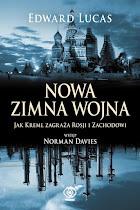A history of catapults
Bringing ancient warfare to life
Mar 29th 2007
From The Economist print edition
The Catapult: A History
By Tracey Rihll
Westholme; 380 pages; $29.95 and £19.95
ANYONE who has fired a rubber band across the office or classroom will know the joy of storing and releasing kinetic energy. The ancients had to make do with twisted ropes and sinews. But with trial, error and some handy mathematics, they created the most sophisticated war machines the world had ever seen—terrifying contraptions capable of hurling rocks weighing as much as 75 kilograms (170lb).
That is the story told by Tracey Rihll, a British classics lecturer, in her history of the catapult over ten centuries, from the earliest slingshots to the technological collapse of the dark ages.
It is much more than tales of boys' toys from long ago. In telling the story of the advance and decline in military technology between the rise of Macedon and the fall of Rome, she gives the reader a commendably approachable and lively tour of classical history. Her dryly humorous asides, such as the appallingly dangerous business of learning to use a sling, are a treat. So are the linguistic twiddles. Darts known by the Greek word for mice became confused with a similar-sounding word that means flies. That became musca in Latin, then the diminutive muschetta and ultimately—by now a weapon, not a projectile—musket.
The predecessors of the big catapults were the sling and the bow. Combining their characteristics amplified the effect of human muscle: instead of harnessing the energy of one man's arm to a wooden bow, the power of several men could be stored in twisted animal sinews and then released. The result could batter fortifications, sink ships, set cities on fire and kill enemies in hitherto unimagined numbers.
But such spectacular siege engines (seen, loosely reconstructed, in faux-medieval films such as “The Lord of the Rings”) are only part of the story. The typical catapult was not a monster, but an easily portable affair, more powerful than the bow and requiring less skill.
Ms Rihll mixes delight at the ancients' ingenuity with contempt for the way their work was obscured by vague and ignorant contemporary chroniclers, as well as by later scholars keen to peddle pet theories rather than look at the evidence. She scrupulously reworks translations of ancient texts to make them comprehensible, spotting mistranslations and misapprehensions galore. The combination of textual analysis, military history and understanding of the underlying science is a fine example of how modern classical scholarship can still surpass the efforts of past centuries, when the subject commanded far greater attention and resources.
It is a pity, then, that her scholarship is let down by feeble illustrations. Ms Rihll's own sketches are valiant but quite inadequate; what is needed are pictures or better diagrams. A fuller index and glossary are badly missed too. Crucial terms such as the catapult “washer” occur throughout the text but are not explained properly.
A revised edition would be a compelling addition to a good school library. It might even send some pupils to explore those dusty and neglected books that were once regarded as the foundation of a proper education.
Thursday, March 29, 2007
Subscribe to:
Post Comments (Atom)








1 comment:
I think the books sucks for the following reasons:
1. It encourages more unfaithfulness. When you encourage unfaithfulness at the smallest unit of a country how do you hope to build it at the higher levels of businesses, organisations and the country? The mindsets that Infidelity & Polygamy create is the underlying of political problems in Africa. I wonder if she wants to replicate the Somalian Genocide across the world 100 years from now.
2. Has she analysed the impact of infidelity on the cultures,the children born from such relationships and the women in psychiatric hospitals ? I have seen a handful in my life it is not a beautiful picture
3. With the gloomy picture of AIDS in Africa which she mentions, I wonder if she considered the correlation if not causality between wild spread of AIDs an infidelity of "business people"
4. Finally, I am worried about the logic. We should choose where the social laws are the most lax and follow it. For Example, people kill each other freely in Congo, and recently Jos, Nigeria. Shouldn't Americans be encouraged to pick up guns and kill each other and not feel "guilty" about it. I still believe in America as the role model we should not lower our standards to the world - we're pacesetters not followers!
I would love to sit with her in a discussion and not hurry to some pleasant conclusion
PS: Is she married? If so, I wonder what her husband's opinions are. If she is not, I wonder why an unmarried women knows what's best for married women.
Post a Comment